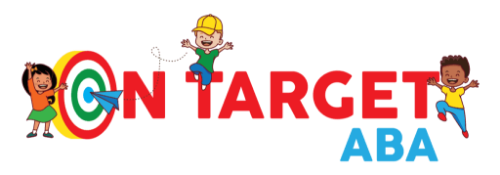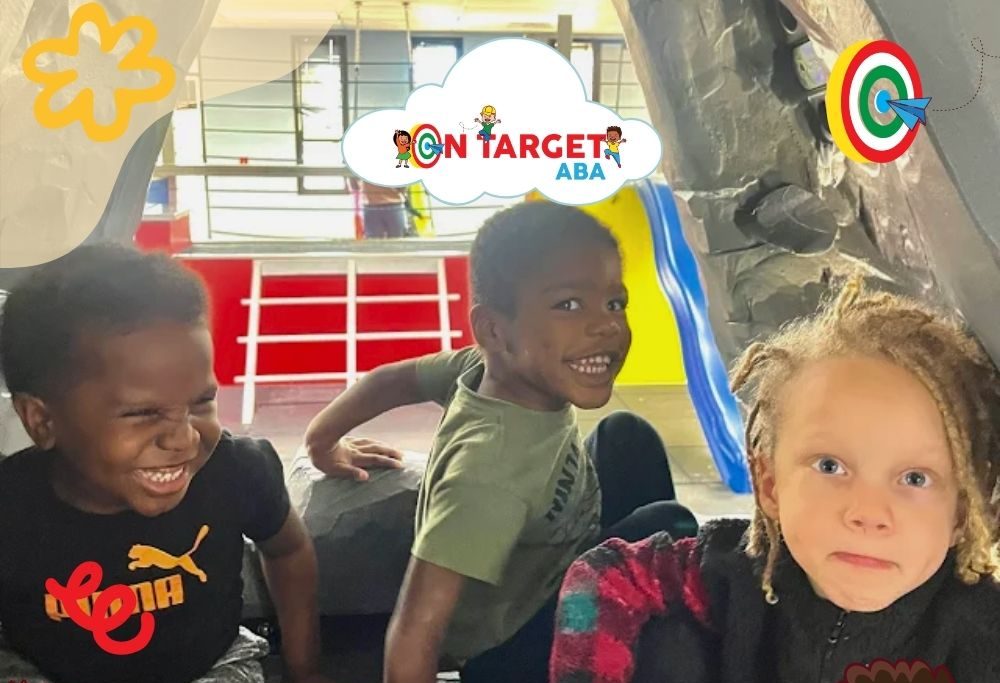🧠 AI Summary:
This blog explains why downtime—quiet moments, swings, resting, simple play, or relaxing transitions—is an essential part of ABA therapy. Parents will learn how downtime helps with emotional regulation, sensory needs, skill retention, stress reduction, and readiness for learning. The blog highlights how On Target ABA incorporates structured and purposeful downtime into each child’s day.
A Calm Moment Can Make All the Difference
At On Target ABA, parents often ask us:
“Why do the kids get downtime during therapy? Is it part of ABA?”
The answer is yes — absolutely.
Downtime in ABA therapy isn’t just a break. It’s a purposeful, therapeutic, and essential part of helping children thrive academically, socially, emotionally, and behaviorally.
Just like adults, children with autism can become overwhelmed after long periods of structured learning. ABA therapy can be joyful and engaging, but it also requires lots of focus, communication, transitions, and problem-solving — which takes energy.
Downtime allows children to reset their bodies, regulate their emotions, and return to learning feeling calm, safe, and ready.
Whether it’s swinging in the gym, relaxing on soft play equipment, sitting quietly with a preferred toy, or sharing a giggle with a friend, these peaceful moments matter.
At On Target ABA, we treasure them.
Why Downtime in ABA Therapy Is So Important
Children with autism often experience sensory sensitivity, emotional highs and lows, difficulty with transitions, and challenges around self-regulation. Because of this, downtime in ABA therapy plays a critical role in helping their minds and bodies stay balanced.
According to the CDC, structured support that includes breaks, sensory tools, and calming routines helps children with autism regulate and engage more successfully in learning tasks.
Here’s why downtime is not optional — it’s essential..
Downtime Helps With Emotional Regulation
Children with autism may feel overwhelmed by noise, transitions, communication demands, or sensory overload. ABA sessions require focus and energy — and sometimes kids just need a moment to breathe.
Calm Time Helps Children Reset
A short break often prevents meltdowns, supports self-control, and helps children feel safe.
During downtime, children may:
- Swing gently
- Sit in a quiet space
- Take deep breaths
- Play independently
- Enjoy a sensory hammock
- Listen to calming music
- Hold a weighted item
These activities support the nervous system and build emotional resilience.
Downtime Encourages Peer Bonding & Social Comfort
While structured peer interaction is important, unstructured social time is equally valuable.
Downtime in ABA therapy often turns into moments where kids:
- Laugh together
- Play simple games
- Explore the room
- Sit near each other comfortably
- Share a quiet moment
These organic connections build confidence, reduce social anxiety, and help children learn that being around others can be enjoyable — not stressful.
Sensory Regulation Through Movement & Rest
Sensory Breaks Keep Kids Balanced
Sometimes downtime looks like:
- Swinging
- Jumping safely
- Climbing
- Using heavy-work activities
Other times it looks like:
- Laying quietly
- Rocking gently
- Sitting with a favorite object
These breaks help children manage sensory input so they feel better prepared for the next learning activity.
Autism Speaks notes that sensory regulation strategies significantly improve participation in structured therapy and reduce stress.
Downtime Strengthens Learning & Skill Retention
Learning new skills is easier when children feel calm.
Downtime in ABA therapy allows the brain to:
- Process new information
- Retain skills
- Transition smoothly
- Restore attention
- Prepare for tasks that require focus
Just like adults need breaks during work, children benefit from breaks during therapy — especially when mastering challenging skills like communication, behavior regulation, or social play.
Encouraging Communication in Low-Pressure Moments
While downtime looks relaxed, it’s also a perfect opportunity to practice natural, spontaneous communication.
Kids may:
- Request a swing
- Ask for a turn
- Comment on what they see
- Ask a peer to play
- Express emotions (“I’m tired,” “I’m happy!”)
These moments often produce some of the most meaningful communication of the day.
What Downtime Looks Like at On Target ABA
Our clinics in
all integrate downtime purposefully throughout the day.
Here are just a few ways you might see it happen:
1. Swinging in the Gym
Many of the photos shared on our socials show children smiling on swings or sensory hammocks — and for good reason.
Swinging helps with:
- Calm regulation
- Core strength
- Proprioception
- Vestibular input
- Mood stabilization
- Focus
Children often return from a swing break feeling lighter and more ready to participate.
2. Gentle Climbing or Play Structures
Children may relax while:
- Sliding
- Crawling through tunnels
- Sitting in a climbing structure
This type of downtime supports emotional comfort and sensory balance.
3. Quiet Time With Staff
Sometimes kids simply want to sit next to a therapist or staff member.
These moments show trust, bonding, and comfort — and are incredibly meaningful.
Children learn that the clinic is a safe and caring place.
4. Relaxing With Peers
The photos captured something beautiful — kids feeling safe together.
This helps build:
- Friendship
- Social comfort
- Shared joy
- Cooperative skills
These moments of natural connection are priceless.
5. Low-Pressure Play
Kids may relax by:
- Doing simple puzzles
- Scribbling or drawing
- Looking at books
- Enjoying water beads or sensory bins
Calm play still builds important cognitive and motor skills — without overwhelming the child.
How Downtime Supports Parents & Families Too
Parents often feel pressured to keep every moment “productive.”
But downtime is productive.
When children learn to:
- Self-regulate
- Calm their bodies
- Manage emotions
- Enjoy quiet time
…they are developing life-long skills that benefit your home, your outings, and your family routines.
Downtime teaches children how to cope — a skill that supports school success, community inclusion, and independent living.
How You Can Use Downtime at Home
Parents can bring the benefits of downtime in ABA therapy into everyday routines.
Here are simple ideas:
- Create a “calm corner”
- Use swings or rocking chairs
- Offer soft blankets or pillows
- Use noise-reducing headphones
- Do gentle stretches
- Offer quiet, repetitive toys
- Allow time to decompress after school or outings
The goal is not to avoid challenges — but to help children face challenges with a regulated, steady foundation.
Final Thoughts: Calm Moments Build Confident Kids
Downtime isn’t a pause in learning — it’s an essential part of it.
Children need quiet moments to rest, regulate, and connect.
At On Target ABA, we value every giggle, every swing, every deep breath, and every quiet smile. These moments make therapy meaningful, balanced, and full of joy.
Because when children feel safe and calm… they grow.

